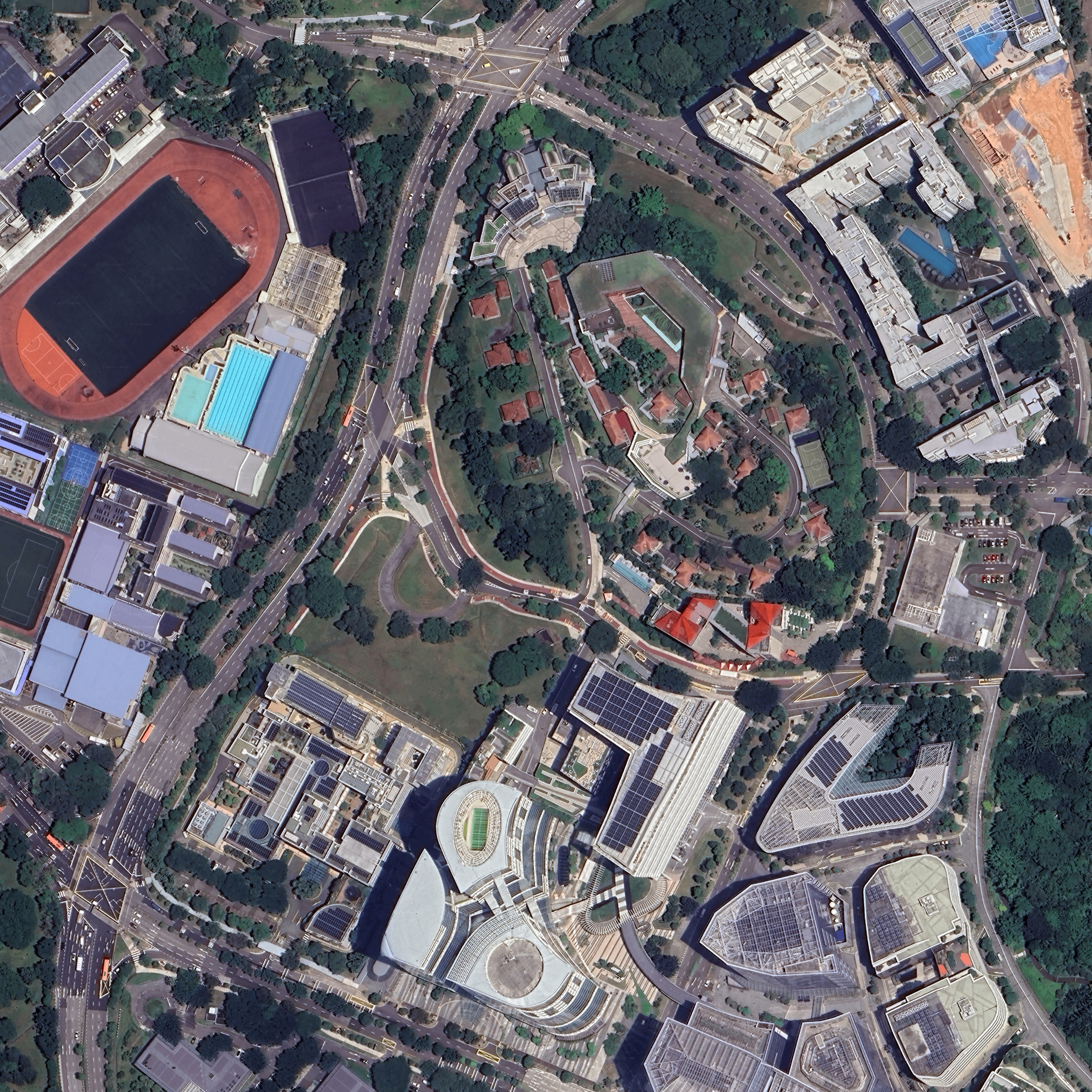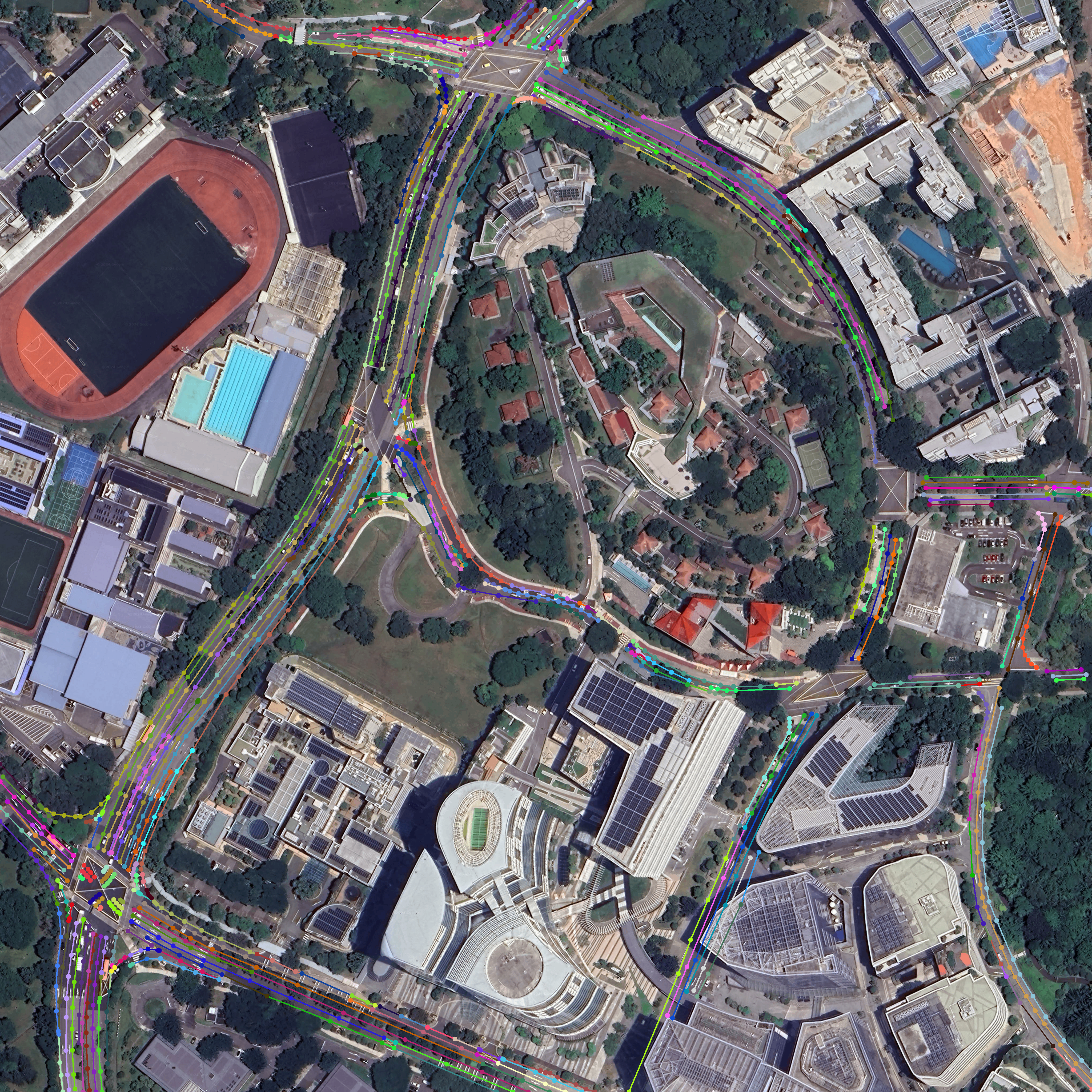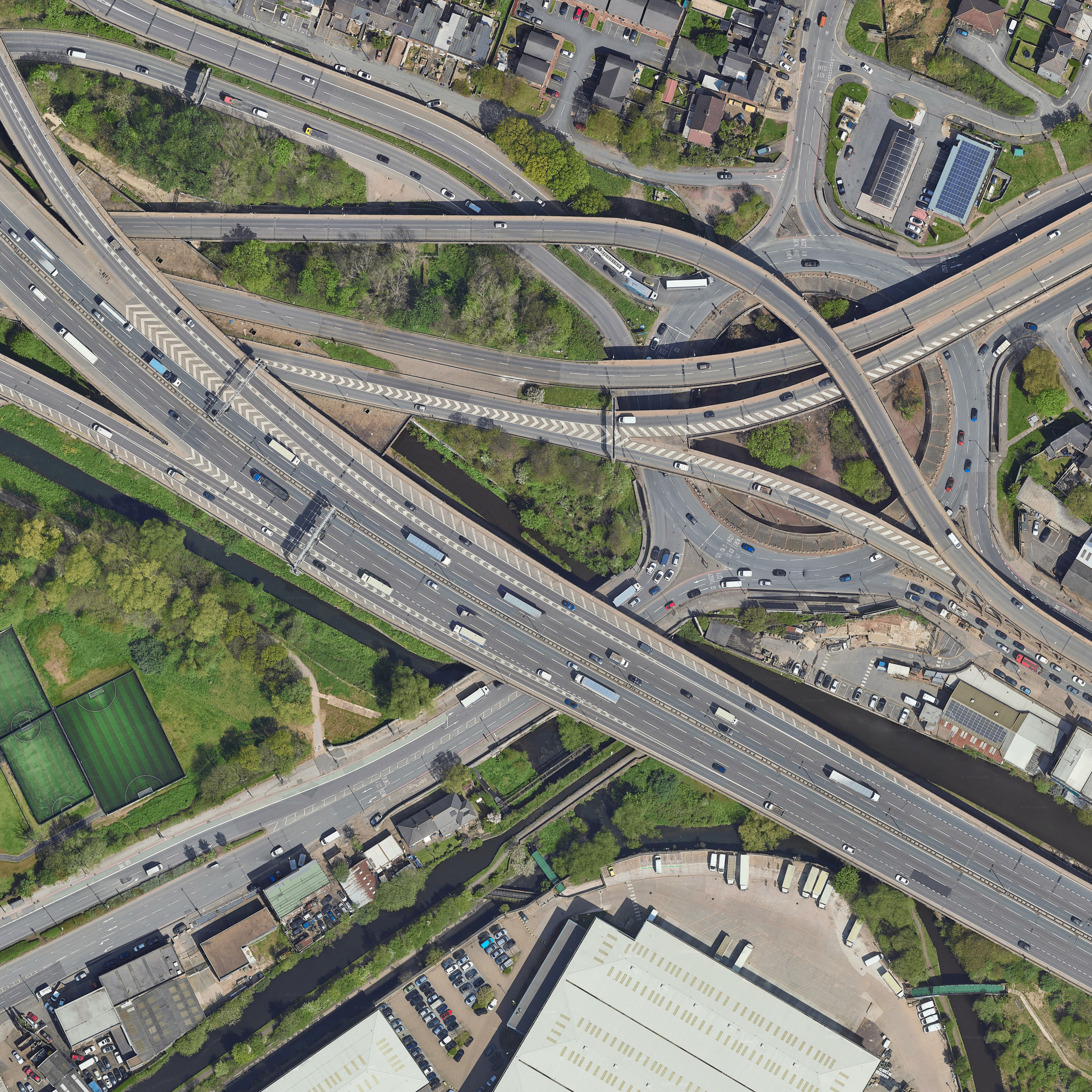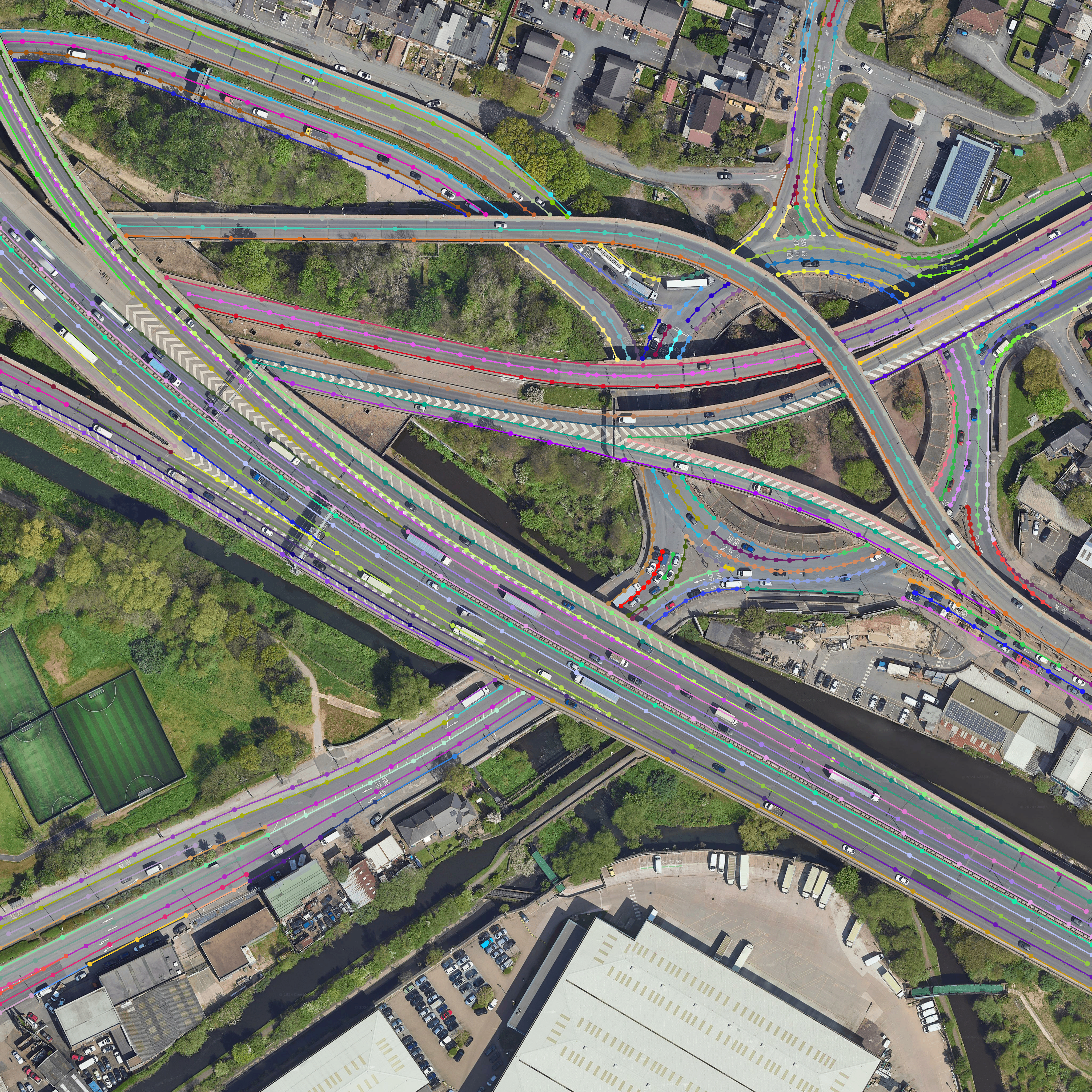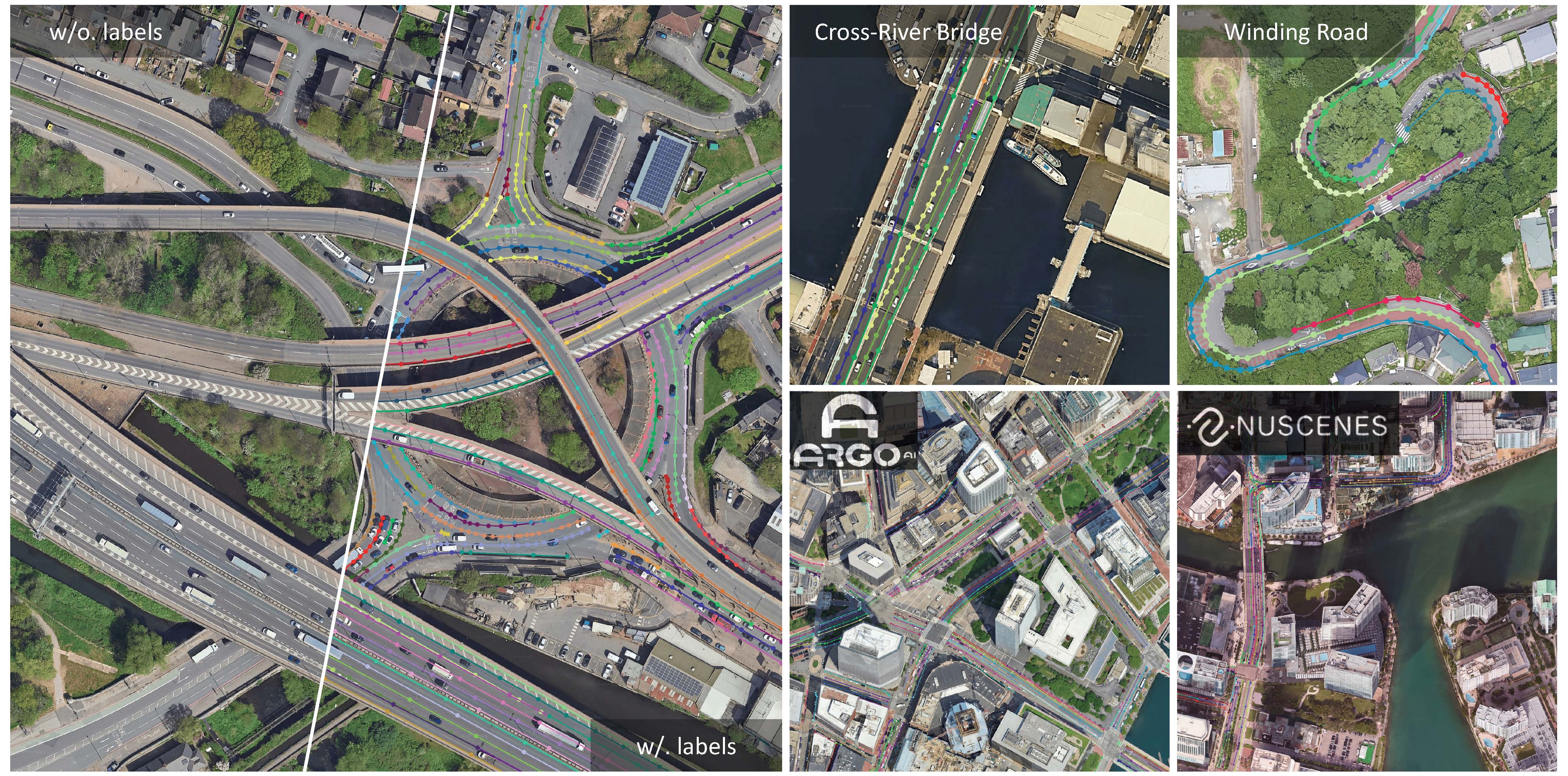Description
The dataset contains 3,787 high-resolution satellite images with fine-grained annotations, covering
diverse geographic locations and popular driving datasets.
It can be used for large-scale map construction and downstream tasks like autonomous driving.
The images are collected from Google Maps at level 19 resolution (0.3m/pixel) and level 20 resolution
(0.15m/pixel), we denote them as OpenSatMap19 and OpenSatMap20, respectively.
For OpenSatMap19, the images are collected from 8 cities in China, including Beijing, Shanghai, Guangzhou,
ShenZhen, Chengdu, Xi'an, Tianjin, and Shenyang. There are 1806 images in OpenSatMap19.
For OpenSatMap20, the images are collected from 18 countries, more than 50 cities all over the world.
There are 1981 images in OpenSatMap20.
The figure below shows the sampling areas of the images in OpenSatMap.
For each image, we provide instance-level annotations and eight attributes for road structures,
including
lanes lines, curb and
virtual lines.
The instances in OpenSatMap images are annotated by experts in remote sensing and computer vision.
We will continue to update the dataset, to grow in size and scope to reflect evolving real-world
conditions.
Examples of Annotated Images
These are two examples of annotated images from OpenSatMap20.
Or you can play it in the

to visualize the annotations by yourself.
Example 1: Annotated image from OpenSatMap20. The image is collected from Singapore Onenorth (nuScenes).
Example 2: Annotated image from OpenSatMap20. The image contains a flyover and roundabout, which is complex.
Image Source and Usage License
The OpenSatMap images are collected from Google Maps.
The dataset will be licensed under a Creative Commons CC-BY-NC-SA 4.0 license
and the usage of the images must respect the
Google Maps
Terms of Service.
Line Category and Attribute
We use vectorized polylines to represent a line instance.
We first categorize all lines into three categories:
curb, lane line, and
virtual line.
A curb is the boundary of a road. Lane lines are those visible lines forming the lanes. A virtual line
means that there is no lane line or curb here, but logically there should be a boundary to form a full
lane. Please refer to the figure below for examples of these three categories.
For each line instance, we provide eight attributes:
color, line type,number of lines, function,
bidirection, boundary, shaded, clearness.
Specifically, they are:
- Color: The color of the line. It can be white, yellow, others or none.
- Line type: The type of the line. It can be solid, thick solid, dashed, short dashed dotted,
others or none.
- Number of lines: The number of the line. It can be single, double, others or none.
- Function: The function of the line. It can be Chevron markings, no parking, deceleration
line, bus lane, tidal line,
parking space, vehicle staging area, guide line, changable line, lane-borrowing line, others or none.
- Bidirection: Whether the line is bidirectional. It can be true or false.
- Boundary: Whether the line is a boundary. It can be true or false.
- Shaded: The degree of occlusion. It can be no, minor or major.
- Clearness: The clearness of the line. It can be clear or fuzzy.
Note that there is no man-made visible line on curbs and virtual lines, so we annotate their colors,
line types, numbers of lines, and functions as
none.
Annotation Format
The annotations are stored in JSON format. Each image is annotated with "image_width", "image_height", and
a list of "lines" where the elements are line instances.
Each line is annotated with "category", "points", "color", "line_type", "line_num", "function",
"bidirection", "boundary", "shaded", and "clearness".
{"img_name": {
"image_width": int,
"image_height": int,
"lines": [
{
"category": str,
"points": [
[float, float],
[float, float],
[float, float],
...
],
"color": str,
"line_type": str,
"line_num": str,
"function": str,
"bidirection": bool,
"boundary": bool,
"shaded": str,
"clearness": bool
},
{
"category": str,
"points": [
[float, float],
[float, float],
[float, float],
...
],
"color": str,
"line_type": str,
"line_num": str,
"function": str,
"bidirection": bool,
"boundary": bool,
"shaded": str,
"clearness": bool
},
...
]
}
}
Meta data
The meta data of GPS coordinates and image acquisition time are also provided. The meta data is stored in
a JSON file.
{
"img_name": [
{
"centerGPS": [float, float],
"centerWorld": [float, float],
"filename": str
},
{
"centerGPS": [float, float],
"centerWorld": [float, float],
"filename": str
},
...
]
...
}
Download
OpenSatMap full dataset:
Baidu Drive,
Hugging Face
Task
Overview
We introduce two tasks using OpenSatMap. Task 1 is instance-level line detection from satellite images.
Task 2 is satellite-enhanced online map construction for autonomous driving.
We are welcome to any other tasks using OpenSatMap. Please contact us for more information.
Task 1: Instance-level Line Detection
The aim of this task is to extract road structures from satellite images at the instance level.
For each instance, we use polylines as the vectorized representation and pixel-level masks as the
rasterized representation.
Task 2: Satellite-enhanced Online Map Construction
We use satellite images to enhance online map construction for autonomous driving.
Inputs are carema images of an autonomous vehicle and satellite images of the same area and outputs are
vectorized map elements around the vehicle.
Code
Here is our code for data acquisition. The code is based on the RoadTracer.
Here is our code for instance-level line detection. The code is based on the MMsegmentation.
S-HDmap is our code for map construction. The code is based on the SatforHDMap.
Contact
For any questions, please contact
Hongbo Zhao and
Lue Fan.
Or you can open an issue in the
OpenSatMap
GitHub repository.
Acknowledgement
Our baseline codes are based on the
MMsegmentation and
SatforHDMap.
Our data acquisition code is based on the
RoadTracer.
We thank the authors for their contributions. We thank the anonymous reviewers for their valuable comments and
Ziguang Niu, Xinyu Gao for their support.
